#1590s Spain
Text

Oil Painting, ca. 1598-1600, Spanish.
By Frans Pourbus the Younger.
Portraying the Infanta Isabella Clara Eugenia.
Royal Collection Trust.
#royal collection trust#infanta Isabella Clara Eugenia#1598#1590s#1590s painting#1590s Spain#Spanish#Spain#womenswear#dress#16th century#Frans pourbus the younger
25 notes
·
View notes
Text

'woman's doublet, spain, c. 1590-1610' in fashioning the body: an intimate history of the silhouette (2015)
282 notes
·
View notes
Photo

The Spanish Empire in 1600.
« Atlante storico », Geo-Mondadori, 2000
via cartesdhistoire
The Spanish West Indian Empire was centered in the north on the Viceroyalty of New Spain and in the south on the Viceroyalty of Peru. It was enriched with the Philippine Islands from 1565, after the Spaniards discovered routes enabling them to cross the Pacific Ocean. In 1571, the city of Manila was founded there.
From 1546, the Spanish exploited the mines of Potosi (Upper Peru), from which most of the world's silver was quickly extracted. From 1564, a convoy system of galleons loaded with silver crossed the Atlantic Ocean to reach Spain. In the Pacific, once a year, the Manila Galleon transported silver from the New Spanish port of Acapulco to Manila in the Philippines. It made the return trip from the Philippines to Acapulco, carrying silk, porcelain, and Chinese lacquerware. From the 1590s, the value of this silver crossing the Pacific Ocean equaled all Atlantic trade combined.
75 notes
·
View notes
Text
friendship ended with 'kiku was a shy and lonely hermit for most of his life only until the meiji era', 'kiku was reasonably well-travelled regionally and a seasoned mariner who culturally has a deep relationship with the sea and who, centuries ago, learned advanced shipbuilding and navigation from yong-soo (who is also the old korean kingdom of silla and another reason the whole student backstabbing his teacher theme is a recurrent thing for kiku.) isolationist at times when domestic political turmoil constrained things, but also adventurous and ambitious, yearning to see what is further beyond. many facets of the same whole. he's an old mariner, and that's why when alfred forces the end of isolationism at the point of a gun(boat), for kiku it was like picking up a sword that he hasn't used in a while, but which he's very familiar with' is my best friend now:
5th century: Goguryeo–Wa conflicts (Korea and Japan)
6th century: Japanese embassies to Sui China
7th century: Baekje-Tang War (Korea, Japan and China)
9th century: Japanese embassies to Tang China
13th century: Mongol invasions of Japan (self-explanatory)
14th—16th century: Japanese wokou piracy
1565: Battle of Fukuda Bay (Portugal and Japan)
1582 Cagayan battles (Japan, China, Korea (pirates) vs. Spain)
1590s CE: Imjin War (Japanese invasion of Korea with the intention to also conquer China)
1609: Invasion of the Ryukyu Kingdom
1613: Hasekura Mission to Mexico and Europe
#hetalia#hetalia headcanons#hws china#hws japan#hws south korea#more complexity than he is a Shy Hermit please it's ludicrous as someone whose folks got invaded by japan so many times lol#he is not shy he is a right pain in the arse and regional hothead when he wants to be lmao
83 notes
·
View notes
Text



















Historical Portraits of Children // The Truth is a Cave – The Oh Hellos
Four Children Making Music – attributed to the master of the Countess of Warwick, 1565 // Three Children with a Dog or Two Sisters and a Brother of the Artist – Sofonisba Anguissola, 1570-1590 // The Children of Philip III of Spain (Ferdinand, Alfonso, and Margarita) – Bartolomé González y Serrano, 1612 // Three Children with a Goat-Cart – Frans Hals, 1620 // The Balbi Children – Anthony van Dyck, 1625-1627 // The Three Eldest Children of Charles I – Anthony van Dyck, 1635-1636 // Five Eldest Children of Charles I – Anthony van Dyck, 1637 // Portrait of the Children of Habert de Montmor – Philippe de Champaigne, 1649 // Group Portrait of Charlotte Eleonora zu Dohna, Amalia Louisa zu Dohna, and Friedrich Christoph zu Dohna-Carwinden – Pieter Nason, 1667 // The Graham Children – William Hogarth, 1742 // Portrait of Sir Edward Walpole’s Children – Stephen Slaughter, 1747 // The Bateson Children – Strickland Lowry, 1762 // The Gower Family: The Five Youngest Children of the 2nd Earl Gower – George Romney, 1776-1777 // Marie-Antoinette de Lorraine-Habsbourg, Queen of France, and Her Children – Élisabeth Louise Vigée Le Brun, 1787 // The Marsham Children – Thomas Gainsborough, 1787 // The Oddie Children – William Beechey, 1789 // Three Siblings – Johann Nepomuk Mayer, 1846 // Happy Children – Paul Barthel, 1898 // My Children – Joaquín Sorolla, 1904 // The Truth is a Cave – The Oh Hellos
#this line makes me feel Very Normal and not at all Deranged 🥴😵💫#portraiture#family portrait#portrait#portrait painting#sofonisba anguissola#frans hals#anthony van dyck#philippe de champaigne#william hogarth#george romney#elisabeth vigee le brun#elisabeth louise vigee le brun#thomas gainsborough#joaquin sorolla#the truth is a cave#the truth is a cave song#the truth is a cave the oh hellos#through the deep dark valley#through the deep dark valley album#through the deep dark valley the oh hellos#the oh hellos#art history#art#lyrics#lyric art#long post
33 notes
·
View notes
Text
Painting a picture of the history of Filipino Tattoos
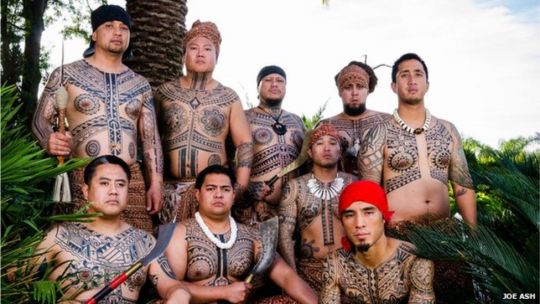
A photo of tattooed Filipino men posted on BBC and accredited to Joe Ash
Tattoos are often seen as integral cultural symbols in my different societies whether it be seen as something honorable or dishonorable. Even in the most straight-laced cultures, a tattoo acts as a mark of some form of the person's history and their standing in their communities as well as how people perceive them.
In a lot of modern cultures, the tattoo often have negative connotations, often associated with delinquency or criminal activity. Historically, however, they may have grander and more honorable significance in different societies. The communities that had existed in the Philippines prior to contact with Spain fits this similar pattern.
Before I start
As usual, the Philippines is a diverse country that has different traditions and histories that come from different ethnic groups and states, only being first unified under a government by colonization. Because of this, this post will only be able to cover parts of this culture and may not be able to fully encompass all Filipino traditions, practices, and beliefs about tattoos.
This is also given the fact that more specific information may be harder to come across or may not exist at all in a space I could easily access.
That being said, the general term for Filipino traditional (both precolonial and current) tattoo practices is batok, batik, patik, or patek depending on language or culture. It is also known as buri or burik in several other groups and languages. This word, however, isn't often used for typical tattooing in most modern communities.
The History
From a general understanding of a lot of precolonial Southeast Asian cultures, it can be assumed that precolonial Filipino societies heavily valued tattoos as their neighboring maritime SEAsian countries also had prior to the introduction of Abrahamic religions to the region which often discouraged or even forbade tattooing the skin.
Although this can be assumed, there were no known precolonial description nor record of these tattoos during the actual time period before Spanish contact. There is evidence found in some burial sites however, as discussed by social anthropologist Salvador-Amores in her paper The Recontextualization of Burik (Traditional Tattoos) of Kabayan Mummies in Benguet to Contemporary Practice (2012). In the paper, she focuses a section on the history of burik by explaining the Kabayan Mummies or the Fire Mummies of Benguet, Mountain Province.
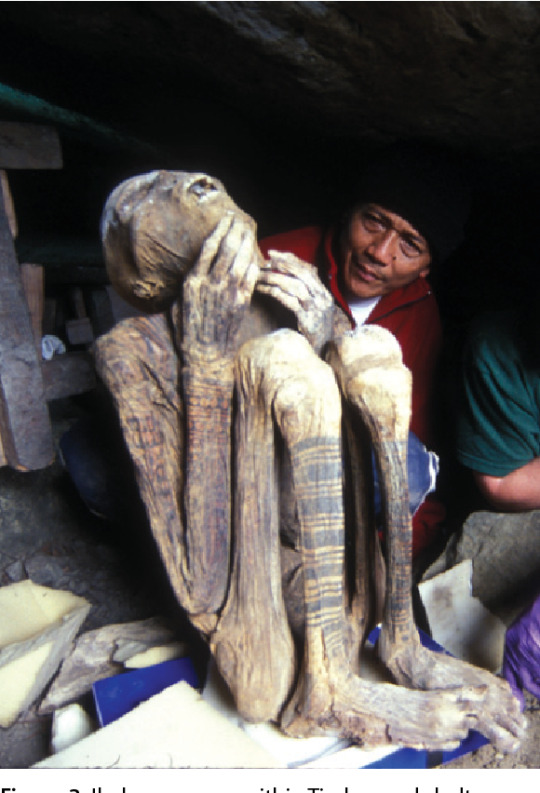
An image of one of the Kabayan Mummies uploaded by Dario Piombino-Miscali on ResearchGate.net
These remains had been dated back to the 13th century and are associated with the Ibaloi, an indigenous ethnic group from Mountain Province found in the northern parts of the island of Luzon. This does confirm that tattooing had been important to the people who had lived in this area during this time period as, in Salvador-Amores's paper, it can be noted that the tattooed mummies seem to be prominent with the adults.
I do have to note that the Ibaloi people, who are part of the larger Igorot ethnic group, were not fully colonized by the Spaniards and therefore does not share the similar Hispanic culture and history that a lot of Filipino groups have. They had only fully been integrated into the Philippines during the American colonial period where they and the other Igorots had been properly colonized by American and placed under the rule of the American-controlled Filipino government. (x)
Regardless, this does show that at least some cultures in the archipelago held tattoos with high importance and did not consider them as something negative compared to the modern perception of tattoos.
The first known illustration of tattooed Filipinos, however, was first seen in the Boxer Codex (circa 1590) during the early Spanish colonial period, written and illustrated by an unknown author.
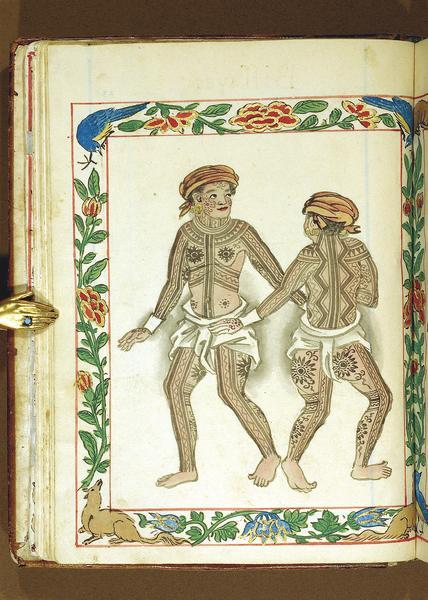
A page from the Boxer Codex (circa 1590), author uknown
This illustration seems to be that of the specific ethnolinguistic group, the Visayans as this page is next to another one labeled as "Biſſaya", a likely earlier spelling of Bisaya that uses the long s (ſ). This aligns with the description given as early as Antonio Pigaffatta, Ferdinand Magellan's chronicler, who consistently describes the Visayans that he has met as painted in his account of their arrival in the islands back in 1521.
The book The Philippine Islands 1493-1898 Vol. XII has compiled different first-hand and second-hand sources about the Philippines during the 15th through 19th century, with Vol. XII focusing on the early 17th century which aligns closely to the Boxer Codex. Within the text, there are several mentions of the "Pintados" or the Painted ones, even having an entire province be called the "province of Pintados".
It isn't made clear who the Pintados are besides the fact that they seem to be hostile towards the Spanish colonizers and had often fought battles with one of the letters even claiming that they had poisoned one of the Spaniards. It isn't until we reach the last part of the compilation which features Pedro Chirino's Relacion de las Yslas Filipinas which I had a hard time finding before but had now found a free and accessible copy. Within Chirino's writing, he explains that the Pintados seem to be a name given by the Spaniards to the Bisayans and further explains it as such:
"The people of the Bisayas are called the Pintados, because they are actually adorned with pictures --not because this is natural to them, although they are well built, of pleasing countenance, and white; but because they adorn their bodies with figures from head to foot, when they are young and have sufficient strength and energy to suffer the torment of the tattooing; and formerly they tattooed themselves when they had performed some act of valor."
Chirino even gives an explanation as to how precolonial Visayans tattooed their skin:
They tattoo themselves by pricking the skin until the blood comes, with sharp, delicate points, according to designs and lines which are first drawn by those who practice this art; and upon this freshly-bleeding surface they apply a black powder, which is never effaced. They do not tattoo the body all at the same time, but by degrees, so that the process often lasts a long time; in ancient times, for each part which was to be tattooed the person must perform some new act of bravery or valiant deed
It is notable, however, that not only did the Spanish not mention any tattoos on other Filipino groups such as the Tagalogs, but a lot of the illustrations in the Boxer Codex do not sport any tattoos at all which makes it confusing as to when had tattoos faded out of cultural significance in these other communities, likely even before Spanish contact.
Lane Wilcken, a researcher who studies the history of tattoos from the Philippines and the Pacific Islands, writes in his book Filipino Tattoos: Ancient to Modern (2010) that it may be possible that the Tagalogs may had lost their tattooing traditions shortly before Spanish contact during the recent islamization of their communities circa 1500 which was and specifically in the polity of Maynila. This may also be the case for the Moros which is a muslim ethnolinguistic group found in the island of Mindanao.
Either way. tattoos became more scarce within Filipino records after the arrival of the Spanish and the introduction of Christianity to the islands, save for some indigenous groups that were not fully colonized by Span like previously mentioned Igorot people.
Because of the spread and dominance of Christian and Islamic customs throughout the country, Batok, as it originally was, was lost to time with the lack of existing artists and cultural relevance tattoos. Tattoos didn't come back to the Filipino mainstream until modern tattoos became more prevalent especially in the mid to late 20th century, similar to its rise in popularity in Western cultures, and even then, it wasn't really what I would consider any traditional and is often negative.
Present Day
Like a lot of other countries, however, tattoos had seen a swing of opinion and is more accepted now as an art form rather than a sign of criminal activity but some stereotypes are still popular.
For instance, during the COVID-19 lockdown, the Department of Education provided modules for students to answer at home which would be then collected by the school from door to door. In one of these modules, Lea Salonga, a Filipino singer, complained on November 17, 2020 on her Facebook page of a discriminatory question that was found in one of the modules, pictured below

EN Translation:
White text: The answer is letter A based on the DepEd answer key.
Module text:
3. Tattoos are a symbol of _____
A. being a criminal
B. being a slave
C. courage and beauty
D. having a low standing in society
This controversy caused an uproar online and showed that there are a lot of Filipinos today that don't see a problem with tattoos and even see them as a positive. Two days after the image was posted on Salonga's page, the Department of Education publicly recognized the misstep and had issued that they officially recognized the controversial answer as an error.
It is important for me to note that, just like in a lot of countries, tattoos are typically not accepted in the corporate world and those who have them either have to get them removed or at least cover them up if they get hired at all. There's still a common idea that people with tattoos, if not dangerous, may be seen as unprofessional or even unclean which I do know is a similar thing that other countries may have as well.
As for batok, its comeback in the larger Filipino mainstream didn't return until some time in the late 2000s and 2010s when more international influence had resparked and interest in more ethnic cultures including the precolonial Filipino tattoos specifically because of the internet and the rise of social media. The current batok that we see outside of indigenous communities could be seen as a recreation of the extinct practices within the Philippines with some level of appropriation from related cultures (by appropriation, I mean this in a neutral way not a negative one).
It is argued whether or not the reconstructed practice could be considered traditional at all, but considering its heavy emphasis on the older designs found in historical illustrations as well as designs from indigenous communities that did not have practice eradicated by colonization, some also argue that the modern tattoos that has gained prominence because of modern technology and research is still valuable in a socio-anthropological sense.
As Salvado-Amore puts it
the successive phases and changes in the status of burik tattoos—enabled by the advent of modern technology, the Internet, and mass media—encourage an interaction between contemporary and historical influences rather than an extinction of past practice.
About Apo Whang-Od
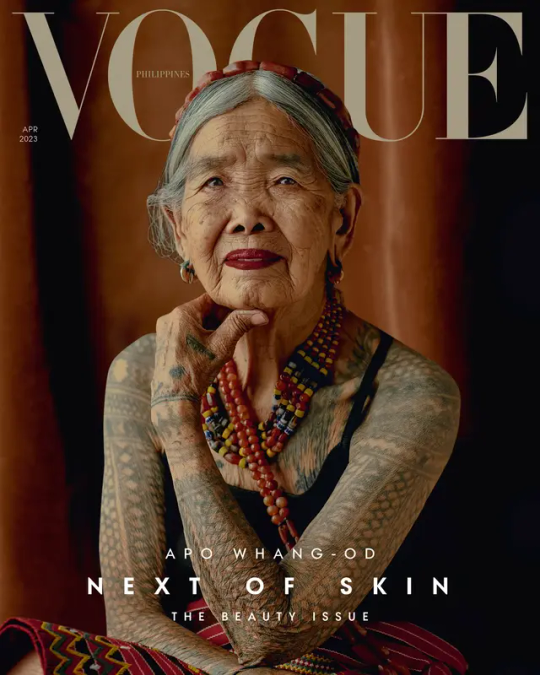
A magazine cover of Vogue featuring Whang-Od, a traditional tattoo artist from the Butbut people, a subgroup within the Kalinga ethnic group. (The rest of this section pulls from the same article by Vogue)
Any research about Filipino tattoos, especially in the modern day would be incomplete without any mention of Whang-Od, the most popular traditional tattoo artist from the Philippines.
Apo Whang-Od (b. February 17, 1917, a.k.a. Maria Oggay) is a member of the Butbut people of the Kalinga indigenous ethnic group from Kalinga province, Philippines. She is often known as one of the last mambabatok in the country which earned her fame and recognition internationally. She started her tattooing practice since she was a teenager at age 16, under the mentorship of her father and was the only known female mambabatok during her time.
For years, she was called on by different communities within her locale in order to tattoo important and symbolic tattoos on members of her and different communities after they had received certain milestones. Men were tattooed for different reasons than women as men were given their marks when they succeed in activities like headhunting, which was ritualistically important for the Butbut people while women were tattooed for reasons like fertility or beauty.
Because of American colonization, however, headhunting was prohibited so she was mostly tattooing women from then onward.
She started gaining recognition some time in the mid-2000s to the 2010s after she started serving foreign tourists, although she doesn't give them the more traditional symbols. Non-members of the group are given a set of tattoos that she could tattoo on anyone without any strong connection to the original meaning of the art.
Since tattooing was passed through family and Whang-Od herself didn't had any children, she was known as the last mambabatok for a time which caused concern for the extinction of the practice as she was already in her 90s when she gained notoriety, but she has since started training her grandniece Grace Palicas and later on her other grandniece Elyang Wigan and the two, who are now in their 20s, has since helped their great aunt dealing with their clientele.
Due to her fame, she is often the subject of foreign media and interest, even being invited by Vogue magazine to pose for one of their covers (pictured above) and is now known as the oldest Vogue cover model earlier this year at the age of 106.
Despite her fame and arguably cultural importance to not only the Kalinga people but the Philippines as well as online petitions since the 2010s to give her the recognition, she is not eligible to receive the National Artist award— one of the highest awards given to artists of most artistic fields of which only 81 people had received. Victorino Manalo, Chairman of the National Commission for Culture and Arts (NCCA) explains that this is because her craft, tattooing, isn't covered by the NCCA but by the Gawad sa Manlilikha ng Bayan (GAMBA, en. Award for Crafters/Creatives of the Nation) but there has been some discussion within the commission about this issue which still ended with her being denied. In light of this, she is now currently on the running to possibly receive the GAMBA award.
She has an online presence managed by others and she can be found via Facebook and Instagram.
Tattoos now, from my experience
As I had said before, tattoos these days are not as negatively seen as they were in the 20th century and had received a more positive reputation thanks to the rise of its social experience due to the internet and social media's prevalence in the country. As an art student, in fact, it's wasn't that surprising when I learned that one of my classmates had a tattoo and it was even a full sleeve! Now, as least three had tattoos before they graduated with one of them actually being a close friend of mine who's planning to get more despite their parents' disapproval.
Despite this, I still do have people in my life right now that see tattoos as undesirable and unclean, with stereotypes still being prevalent. I had once heard people speak of them in such a negative way but then make an exception for the artsy type of people? It's odd.
As for batok or batik, I had not seen a lot of people with these tattoos in my own life and had only seen it through articles and images circulated around by other people who I don't even know. I guess it makes sense as most people who do get tattoos similar to batok or batik often do it in tourist-y places or are foreigners who want to get a piece of Filipino culture on their way out of the country.
Besides more culture-focused people, batik or batok isn't as prevalent as some of these articles might make it seem and most typical Filipinos who don't come from these cultures are more likely to either not have tattoos at all or have similar tattoos to those that you may see in other countries.
Either way, tattoos could be so personal to a person and whether it's something as deeply-rooted to culture like batik or if it's just the names of your favorite K-Pop idol, that tattoo is important and has special meaning. Get whatever tattoo that you want or don't if you don't want any at all!
#mayaposts#mayapino#philippines#filipino#philippine history#philippine culture#filipino culture#filipino tattoos#philippine tattoos#history#culture#tattoos#apo whang-od#whang-od#mummy#mummies#death#long post#very long post
76 notes
·
View notes
Photo

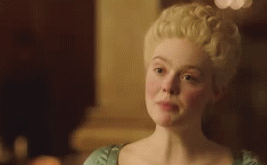

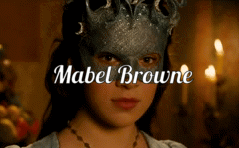


“These now serve one noble Queen,
But if power were in me,
For beauty, praise and virtues sake,
Each one a Queen should be.”
- The Praise of Eight Ladies of Queen Mary’s* court, by Richard Edwards
YOUNG LADIES OF MARY I’S COURT
JANE DORMER - Born in 1537, Jane Dormer was childhood playmates with King Edward VI. Jane joined Mary’s service prior to her accession, and upon becoming queen in 1553 became her closest maid, sleeping in her bedchamber with her, carving the queen’s meat and looking after the crown jewels. Mary was reluctant to let her marry, claiming there was no one worthy enough for her.
Jane was described in a poem by courtier playwright Richard Edwards as “a darling, and of such lively hue, that who so feeds his eyes on her, may soon her beauty rue.”
She eventually married Gomez Suarez, Duke of Feria, a close friend of Philip II of Spain in 1559, and moved to Spain later that year while pregnant with their first child. In Spain, Jane would maintain contact with Roman Catholics in England, and was seen as a champion of exiled English in Elizabeth’s reign; she also corresponded with four different Popes. After her husband’s death she took control of his estates, and was a candidate to take up the governorship of Flanders in the 1590′s.
MABEL BROWNE - Born in 1538, Mabel joined Mary’s household sometime prior to 1552. Due to her long standing service, Queen Mary attended Mabel’s wedding hosted in the Chapel Royal on 28th May 1554; according to historian Mary Everett Green, Mabel first met her husband Gerald Fitzgerald, 11th Earl of Kildare, at a masked ball. Shortly after the pair left for Ireland, where Mabel kept several priests in her household including a private chaplain named Nicholas Eustace. Nicholas was a relation of the Elizabethan rebel James Eustace, who mustered an Irish army with the help of Spanish troops to depose Queen Elizabeth; when this failed he fled to Spain. Mabel’s husband would be arrested in the Tower of London for years under suspicion of treason, which Mabel avoided despite keeping in touch with Jane Dormer.
MAGDALEN DACRE - Born in 1538, Magdalen Dacre was described by historian Sharon Turner as having been blonde, pretty and very tall; she allegedly stood a head above the other maids at court. According to contemporary biographer Richard Smith, one day Magdalen was washing her face when Queen Mary’s husband Philip II of Spain “playfully reached in”. She then picked up a staff and “strongly stroke the King on the arm”.
Like Jane Dormer, she was one of the maids mentioned in Richard Edward’s poem, where she was described as “not dangerous, her talk is nothing coy, her noble stature may compare to Helen of Troy.”
On 15th July 1558, Magdalen married Anthony Browne, close friend of Queen Mary and former Master of the Horse to Philip. The ceremony took place at Saint James’s Palace and the queen was in attendance. During Elizabeth’s reign Magdalen kept an illegal chapel for 120 worshippers, and her home became locally known as “Little Rome”. She supposedly wore a coarse linen smock beneath her court dresses, and was once accused of recusancy. Despite this, Queen Elizabeth visited her and her husband at Cowdray Castle in 1591, where the priests were kept well hidden.
*the poem is titled Queen Elizabeth’s ladies, but all the women mentioned served Mary and not her sister
#i've had this in my drafts for years lol#anyway if no one's making content i'll make it myself!#mary tudor#mary i#tudor#history
49 notes
·
View notes
Text








AU: Valois House. Children Francis I and Claude Valois.
Luisa(1515 - 1576). Queen of Spain and Empress of the Holy Roman Empire. Wife of Charles V. Despite the fact that the age difference between the spouses was 16 years, they loved each other. Charles treated his young wife with tenderness. She was interested in music, dancing and writing. Luisa and Charles had 7 children: John III, Claude, Philip, Ramiro, Ferdinand, Joana, Charles.
Charlotte(1516 - 1570). Queen of Portugal. Wife of Juan III and mother of 6 children: José I, Manuel, Isabella, Sancho, Aldegunda, Mary. Charlotte devoted much time to the education of her children and the enlightenment of the Portuguese court. She was the favorite sister of Francis II and maintained a close relationship with his wife.
Francis II(1518 - 1590). King of France. Husband of Mary Tudor. Francis loved his wife. Unlike his father and brothers, he never had mistresses or children out of wedlock. The reign of Francis II was an era of prosperity and rise. Father of 8 children: Claude, Francis III, Catherine, Charlotte, Tristan, Raoul, Adele, Henry.
Henry(1519 - 1587). Duke of Orleans. Husband of Catherine de Medici and father of 10 children: Francis, Elizabeth, Claude, Louis, Charles, Henry, Margaret, Hercule, Victoria and Jeanne. All his life loved only his mistress Diana de Poitiers, even wanted to marry her, but because of pressure from his father did not do it.
AU: дом Валуа. Дети Франциска I и Клод Валуа.
Луиза(1515 - 1576). Королева Испании и императрица Священной римской империи. Жена Карла V. Несмотря на то, что разница в возрасте между супругами была 16 лет, они любили друг друга. Карл с нежностью относился к молодой жене. Интересовалась музыкой, танцами и писательством. У Луизы и Карла родилось 7 детей: Хуан III, Клод, Филипп, Рамиро, Фердинанд, Хуана, Карл.
Шарлотта(1516 - 1570). Королева Португалии. Жена Жуана III и мать 6 детей: Жозе I, Мануэль, Изабелла, Саншу, Альдегунда, Мария. Шарлотта уделяла много времени образованию своих детей и просвящению Португальского двора. Была любимой сестрой Франциска II и поддерживала близкие отношения с его женой.
Франциск II(1518 - 1590). Король Франции. Муж Марии Тюдор. Франциск любил свою жену. В отличие от отца и братьев у него никогда не было любовниц и внебрачных детей. Правление Франциска II было эпохой процветания и подъёма. Отец 8 детей: Клод, Франциск III, Екатерина, Шарлотта, Тристан, Рауль, Адель, Генрих.
Генрих(1519 - 1587). Герцог Орлеанский. Муж Екатерины Медичи и отец 10 детей: Франциск, Елизавета, Клод, Людовик, Карл, Генрих, Маргарита, Эркюль, Виктория и Жанна. Всю жизнь любил только свою любовницу Диану де Пуатье, даже хотел на ней жениться, но из-за давления отца не стал этого делать.
Part 1.
#history#history au#royal family#royalty#au#france#france history#History of France#French royal family#french#french royalty#french royal family#French royal#Royal#Royals#the tudors#henryviii#mary tudor#the serpent queen#catherine de medici#mary stuart#Henryii#francis valois#The reign#elizabeth i#15th century#16th century#Francis i#Francisii#French kings
14 notes
·
View notes
Note
What's better than 1 poly line?
2 poly lines
However tell us more about the oc I'm intrigued
Alexander Johnson ‘Johnny’ Ward

Birthday: 9th of September 1590
Diet: mixture of human blood and animal blood
Early life:
Johnny was born to a prominent household in 1590. His father was a well known lord and his mother was rumoured to be related to distant European royalty.
Johnny was born the oldest of three children with two younger sisters and was going to be the heir of the estate and title after of his parents demise.
That was until his father was accused of treason to the crown and was summoned to be executed. The guards who were to watch the family on they’re trip to the castle from their home mentally tortured them and brutalised his sisters and mother.
When the family arrived to the castle, his father was falsely proven guilty and was hung, drawn and quartered.
His mother and sisters were thrown in cells and then hung with the youngest only being thirteen. Johnny was spared because of his fighting abilities and his hunting skills.
Johnny was then forced to join the kings guard and relinquish any titles and property to the crown while also taking a vow of chastity.
Johnny was outraged but out of fear he fought for the king and was always seen “as sneaky as a shadow” because of his ability to sneak away into the dark and surprise his opponent.
Johnny met a mysterious friend of the crown after the princess had grown attached to him and threw a hissy fit to her father to have him assigned to her. While he was protecting the princess during a ball he met a French vampire
The vampire took interest in Johnnys ability to track so he then offered to turn him and have him join the vampires coven. Johnny hesitated but accepted and became a vampire.
He developed a strong power and the French vampire arranged for a boat for the two of them to sail to Spain. As a final act of revenge, Johnny seduced the kings daughter and squandered her virginity before hanging the sheets out on her balcony which ruined her reputation. He then killed the kings only son making him have no male heirs.
With the murder of the kings son and the princess being seen as damaged goods, the kings line ended and a cousin took the crown after his death. This act was revenge for Johnnys family’s death and his sisters assault.
After Johnny was satisfied with his revenge he joined his creator in Spain and stayed with his coven for many decades until the volturi called them forth and accused them of antagonistic behaviour towards other covens, which was true.
The rest of the covens fate was sealed when it was found that the leader had impregnated a human woman. The woman and the other coven members were put to death but Johnny escaped after betraying his coven and swearing loyalty to the volturi over his coven and told the volturi of his covens cruel acts towards a smaller clan to provide evidence for their trail.
The volturi offered up Jane as a mate as reward but James refused and decided to stay alone as a rogue
To provide for himself he would complete small tasks or spy for the volturi and they would pay him for his work.
He would often remember a time he walked through the volturi’s halls to find Caius walking and talking with you which unnerved him considering Caius was seen as a king of cruelty and to see him acting so gently with you sparked curiosity.
This curiosity only grew when he was assigned to spy on the cullens, specifically you. He found you interesting but only saw this as a job
Not for long…….
Names:
The shadow- marcus
Alexander- Caius
Johnny- most known by
Outsider- alec
Savage-Jane
Brute- aro
Kidnapper- cullens
John- reader
Alex- reader
Predator- rosalie
Pervert- edward
Rogue- Carlisle
Bastard- esme
Freak- emmet and Jasper
Baby- reader
Power- darkness manipulation
Johnny can control the dark and bend it to his will. One of his many abilities is to manipulate shadows of his opponents to attack and block them. He can also manipulate the dark to act as a cloak of invisibility for him and masks his presence from others.
He can bring shadows of animals and have them attack others with realistic animalistic ability’s (example- bear would have same bite strength of actual bear) this also means he can slightly alter sizes of shadows and make the animal shadows larger.
Drawbacks-
Shadow ability only works if a shadow is prominent so it won’t work in complete darkness
Darkness ability to cloak him doesn’t work during the day because of the brightness
He can only manipulate a certain shadow for half an hour or less before he starts to lose it
Afflictions
Loyal to:
The volturi
Reader (in future)
Family members
Lord Eric ward- father (hung, drawn and quartered)
Lady Elisa ward- mother (hung to death)
Lady Annabelle- sister (hung to death)
Lady grace- sister (hung to death)
Lestat Mortimer- creator (killed by voturi)
Physically description:
Eyes: red ( vampire) green (human)
Hair: curly blonde hair
Height: 6’2
Build: muscular

Hope this tells you all you need to know :)
Love ya ❤️
#slashers x reader#emmet cullen x reader#alice cullen#esme cullen x reader#the cullens x reader#alice cullen x reader#rosalie cullen x reader#yandere cullens x reader#jasper cullen#edward cullen#carlisle cullen#edward cullen x reader#carlisle cullen x reader#yandere jasper hale x reader#yandere rosalie hale x reader#jasper hale#rosalie hale#yandere volturi x reader#volturi x reader#volturi#yandere aro x reader#yandere caius x reader#yandere marcus x reader#yandere oc x reader#alec volturi#jane x reader#yandere twilight x reader#yandere twilight#twilight x reader#aro x reader
35 notes
·
View notes
Text
Soon after Hatton ascended to the lord chancellorship, his status increased further due to the deaths of other councillors, particularly Leicester in 1588 and then Walsingham in 1590. This left him higher in the hierarchy than at any other time, effectively paired with Burghley as leaders of the government. Broadly speaking they continued the traditional co-operative approach which Elizabeth preferred. With the various crises of the 1580s surmounted, Mary dead, and the war with Spain an existing reality, there were relatively few contentious political issues on hand. Perhaps the defeat of the Armada – in which Hatton was almost constantly at court, directing the defence as part of the Privy Council – also generated some good feeling and esprit de corps. Some indication of the range of Hatton’s activities at that point can be gleaned from his correspondence with Robert Cecil in 1590–91: he was busy with the war in France, Scottish issues, the Hacket affair, a speech at the Guildhall, the government of the City of London, intelligence from Spain, naval ventures, as well as the routine management of royal and courtly egos and ambitions. Hatton was also closely involved in Irish affairs in this period. (..)
Hatton’s national profile also grew markedly in these years. As Lord Chancellor, he presided over the House of Lords in the 1589 Parliament. He was chosen as Chancellor of Oxford in succession to Leicester, as well as steward of Cambridge, and towns such Andover and Salisbury selected him as their High Steward. He clearly gained more influence over patronage; the appointment of Henry Unton as ambassador to France, for example. The appointment of religious conservatives to significant local roles such as deputy lieutenancies also look like signs of his influence: Hatton’s clients George Fermor in Northamptonshire and John Petre in Essex are examples.
In these years, Hatton also played an important role in bringing forward promising younger figures to replenish the depleted ranks of the Privy Council. Hatton probably encouraged the rise of his anti-Puritan allies, such as John Fortescue (who became a privy councillor in 1589) and John Puckering. However, his relations with Robert Cecil and Robert, Earl of Essex are both more important and better documented. Hatton encouraged the appointment of Robert Cecil to the Privy Council in spite of his youth, and was his staunch supporter, as their surviving correspondence in 1590–91 shows very clearly. He also encouraged and defended Essex, writing to him to encourage him to curb his headstrong approach to royal service; Robert Cecil noted Elizabeth’s comment that Hatton ‘would not suffer her to chasten’ Essex.
Neil Younger, Religion and politics in Elizabethan England: The life of Sir Christopher Hatton
#Neil Younger#non-fiction#Christopher Hatton#William Cecil#Robert Cecil#Elizabeth I#Elizabethan England
2 notes
·
View notes
Text
reading list (so i stop getting lost) (now with a cut lmao)
ON HOLD -> Rio Babel: a história das línguas na Amazônia
CURRENTLY: Escravidão, homossexualidade e demonologia
Go-betweens and the colonization of Brazil: 1500 - 1600 <- EXTREMELY GOOD
O Arco e o Cesto <- EXTREMELY GOOD
The Prehistory of Samba: Carnival Dancing in Rio de Janeiro, 1840-1917 <- GOOD
Canção de ninar brasileira: aproximações <- GOOD
Iberian Imperialism and Language Evolution in Latin America <- MOSTLY GOOD
Efeitos do contato linguístico entre o Português Brasileiro e o Nheengatú em São Gabriel da Cachoeira (AM)
Family and Property in Colonial Brazil
The Magic of Brazil: Practice and Prohibition in the Early Colonial Period, 1590-1620
“Honde he o Contrahente Natural Emorador": Emprego do H em Assentos de Casamentos do Século XVIII
From Military Defeat to Immortality: The Birth of Sebastianism
O Portugues do Brasil: Uma Retrospectiva Historico-Linguistica de 1500 a 1800
Origens do Português Brasileiro
História social da língua nacional
A política de estandardização da língua geral na Amazônia no período colonial (séculos XVII-XVIII)
Race and the State in Colonial Brazil
Commentary: Brazil and a Continuous Laboratory of Races
'Pretos' and 'Pardos' between the Cross and the Sword: Racial Categories in Seventeenth Century Brazil
Brasil: colonização e escravidão
Discursos coloniais e identidade nacional no centenário da independência do Brasil
Vida privada e quotidiano no Brasil: na época de D. Maria I e D. João VI
Women and Society in Colonial Brazil
Women and Means: Women and Family Property in Colonial Brazil
História da vida privada no Brasil
Colonial Brazil
Chapters of Brazil's Colonial History, 1500-1800
Sistema de Casamento no Brasil Colonial
Ser nobre na Colônia
Historicity, Achronicity, and the Materiality of Cultures in Colonial Brasil
Vida privada e quotidiano no Brasil: na época de D. Maria I e D. João VI
Cultura Letrada e Cultura Oral no Rio de Janeiro dos Vice-reis
Death in Portugal: Studies in Portuguese Anthropology and Modern History
O diabo e a terra de Santa Cruz: feitiçaria e religiosidade popular no Brasil colonial
Millenarian Slaves? The Santidade de Jaguaripe and Slave Resistance in the Americas
Consuming Grief
As primeiras fábricas de papel na cidade do Rio de Janeiro no século XIX
The Feast of Corpus Christi: Artisan Crafts and Skilled Trades in Eighteenth-Century Rio de Janeiro
Hercules and the King of Portugal: icons of masculinity and nation in Calderón's Spain
A subversão pelo riso: estudos sobre o carnaval carioca da Belle Époque ao tempo de Vargas
The Brazilian House in the Eighteenth Century: Devotion at Home <- BAD
Portugal's "Saudosismo" Movement: An Esthetics of Sebastianism <- BAD
Messianismo e milenarismo no Brasil <- EXTREMELY BAD
#língua geral#paris marshes#as always if something seems interesting shoot me a DM and i'll share the pdf#adventures in post-academic academia#updated 23 feb#i need more articles and less books#i have so many books to read
2 notes
·
View notes
Text
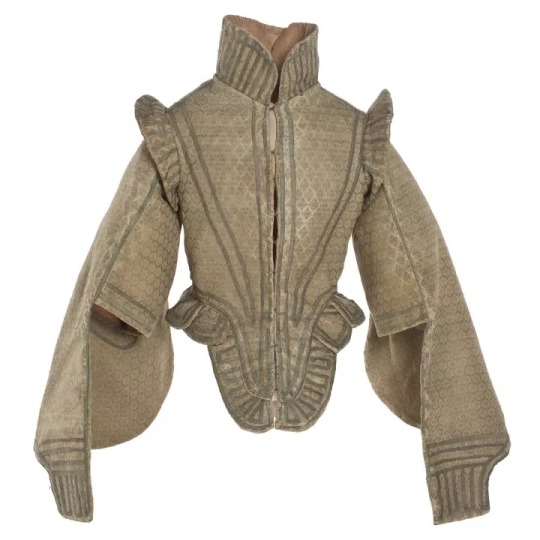
Beige Doublet, 1589-1610, Spanish or Italian.
Musée des Arts Décoratifs Paris.
#Musée des Arts Décoratifs Paris#MAD Paris#16th century#17th century#1589#Spanish#1590#1600s#Spain#Italy#Italian#1590s Spain#1600s Spain#1590s Italy#1600s Italy#extant garments#womenswear#doublet#beige#1590s doublet#1600s doublet
29 notes
·
View notes
Photo

Jan Janssens - Caritas Romana (Madrid) -
oil on canvas, height: 173 cm (68.1 in); width: 215 cm (84.6 in)
Real Academia de Bellas Artes de San Fernando, Madrid, Spain
Jan Janssens (August 1590 in Ghent – after 1650) was a Flemish Baroque painter and draftsman who is considered to be the most important of the so-called Ghent Caravaggisti. These Caravaggisti were part of an international movement of European artists who interpreted the work of Caravaggio and the followers of Caravaggio in a personal manner. Janssens altarpieces and other compositions offering very realistic representations of religious motifs adorn many churches in and around Ghent. He also worked on commissions for international patrons.
32 notes
·
View notes
Text



Mark Alexander Boyd was born on 13th January 1563 in Penkill, Ayrshire.
Born Mark Boyd, the Alexander was his own grandiose addition, was the great-grandson of Robert Boyd, Grand Chamberlain of Scotland. He was educated at Glasgow College under the care of his uncle James Boyd, the Archbishop of Glasgow, his father having died when he was a child. He appears to have been a recalcitrant student with a hot-headed nature and it is said he was advised to move abroad to pursue a career as a soldier of fortune. In any event, he went to France at the age of 18 to study Law in Paris under a Latin tutor and later studied Law in Orleans, then Bourges. Having to quit Bourges because of an outbreak of the plague, he moved to Lyons and then Italy
On his return to France he joined the army of Henry III, fighting on the Catholic side during the French Wars of Religion in spite of being a Protestant himself. After being wounded in the foot he resumed his Law studies in Toulouse but was imprisoned on suspicion of being a spy. However, he escaped to Bordeaux with the help of friends, later spending time in La Rochelle, Spain, and The Netherlands.
In conjunction with this extraordinary itinerant life, this colourful, eccentric character wrote poetry mostly in Latin and Greek and had two collections of Latin poems published in 1590 and 1592. He returned to Scotland in 1595 where he unsuccessfully sought the patronage of James VI with a flattering poem. He died of fever in Ayrshire in 1601. His only known poem written in Scots, the Sonnet of Venus and Cupid, also known as “Fra banc to banc” was rediscovered and published in 1900 by Sir Arthur Quiller-Couch in his Oxford Book of English Verse and championed by Ezra Pound.
The first pic is a 17th century engraving of Boyd, the second is a Scottish twenty pound note, with a wee excerpt of the below poem, so the vast majority of my fellow Scots may not have heard of Boyd, but you have been walking around with a connection to him for years.
Fra banc to banc, fra wod to wod, I rin
Ourhailit with my feble fantasie,
Lyk til a leif that fallis from a trie
Or til a reid ourblawin with the wind.
Twa gods gyds me: the ane of tham is blind,
Ye, and a bairn brocht up in vanitie;
The nixt a wyf ingenrit of the se,
And lichter nor a dauphin with hir fin.
Unhappie is the man for evirmair
That teils the sand and sawis in the aire;
Bot twyse unhappier is he, I lairn,
That feidis in his hairt a mad desyre,
And follows on a woman throw the fyre,
Led be a blind and teichit be a bairn.
6 notes
·
View notes
Photo

Three Spanish bombards, recovered from the San Esteban. The foreground item is a replica sledge carriage. While obsolescent by 1550 and obsolete by 1590, Spain continued using them due to shortages of better artillery. Photo by William Lardas in: Spanish Galleon vs. English Galleon, by Mark Lardas
52 notes
·
View notes
Text
Portrait of an unknown woman, by an unknown artist
This piece has just recently been rediscovered, and has caused great speculation among experts as to its provenance. It has been approximately dated to the 1590s.
There are many unusual qualities to the work that have puzzled art historians. The subject of the painting is unadorned by fine jewellery, and is dressed in black, simple clothing. Her hair is loose, and she does not wear a veil. Yet, as we know, to be painted at all was a reserve of only the most extravagantly wealthy.
So what led her to be painted in this way?
John Garland has theorised the following: “A widow, perhaps. This was a time of significant turmoil in England, facing unrelenting military conflict from Philip of Spain. Many men were lost at sea - and many would have left their wives behind. Her eyes are rich with tears as she reads; the artist’s intimate depiction suggesting she cannot even bring herself to participate in the trappings of performed mourning - only reading and rereading the loathed sentences again and again, now, and forever.”
Now on display at the National Gallery, London.
17 July, 2022.
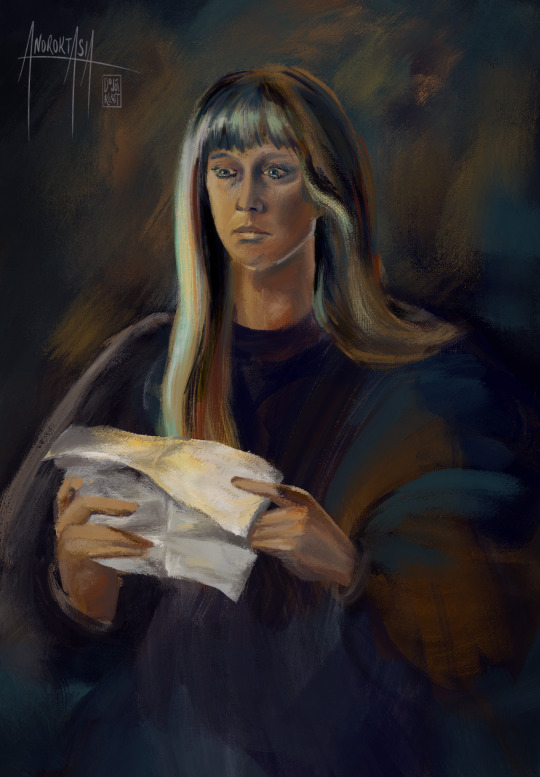
Songs of love: Day 17
Love letters
I think it’s obvious but the above is fake news, I painted it myself.
#helen sinclair#liv/helen#doctor who#my art#dw art#big finish#songs of love prompt fills#songs of love#yah this is an AU i suppose where helen gets ABANDONED in some rando century and the doctor and liv can't take the tardis back to get her#but they can send letters.#'we'll find you' they tell her#it's been years
16 notes
·
View notes